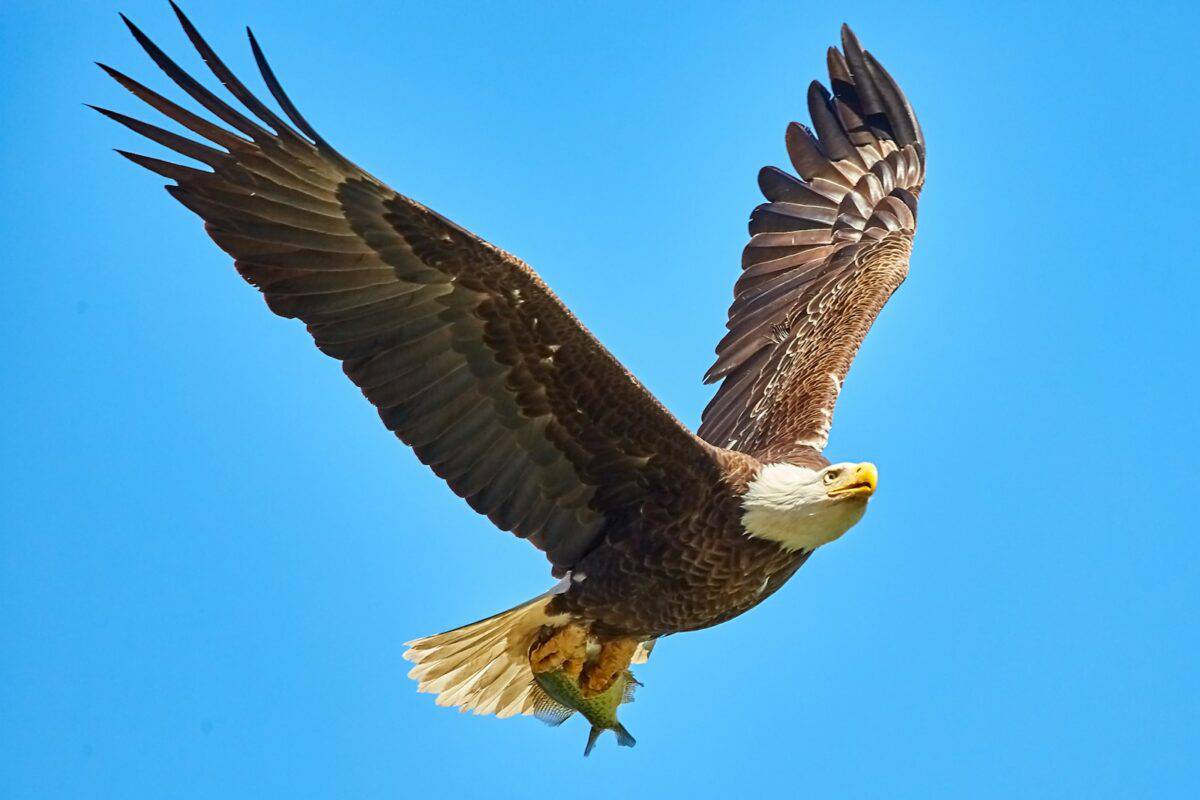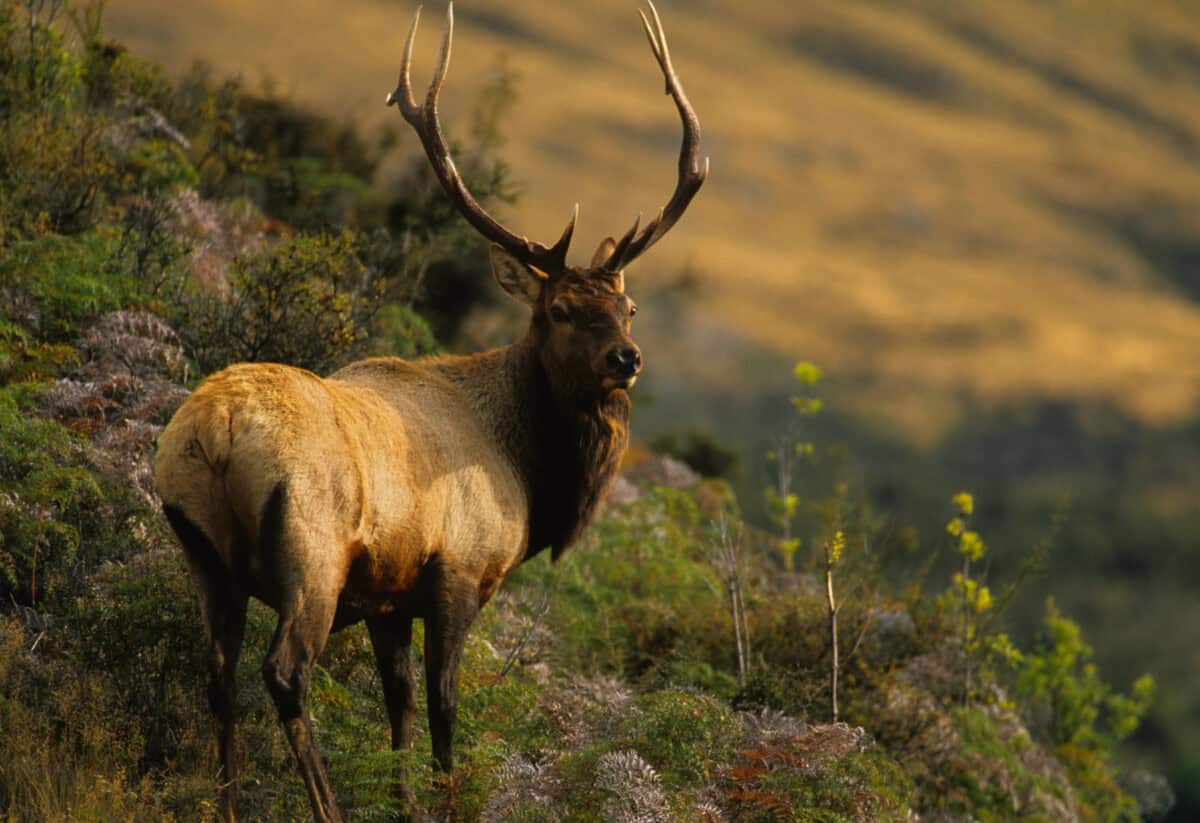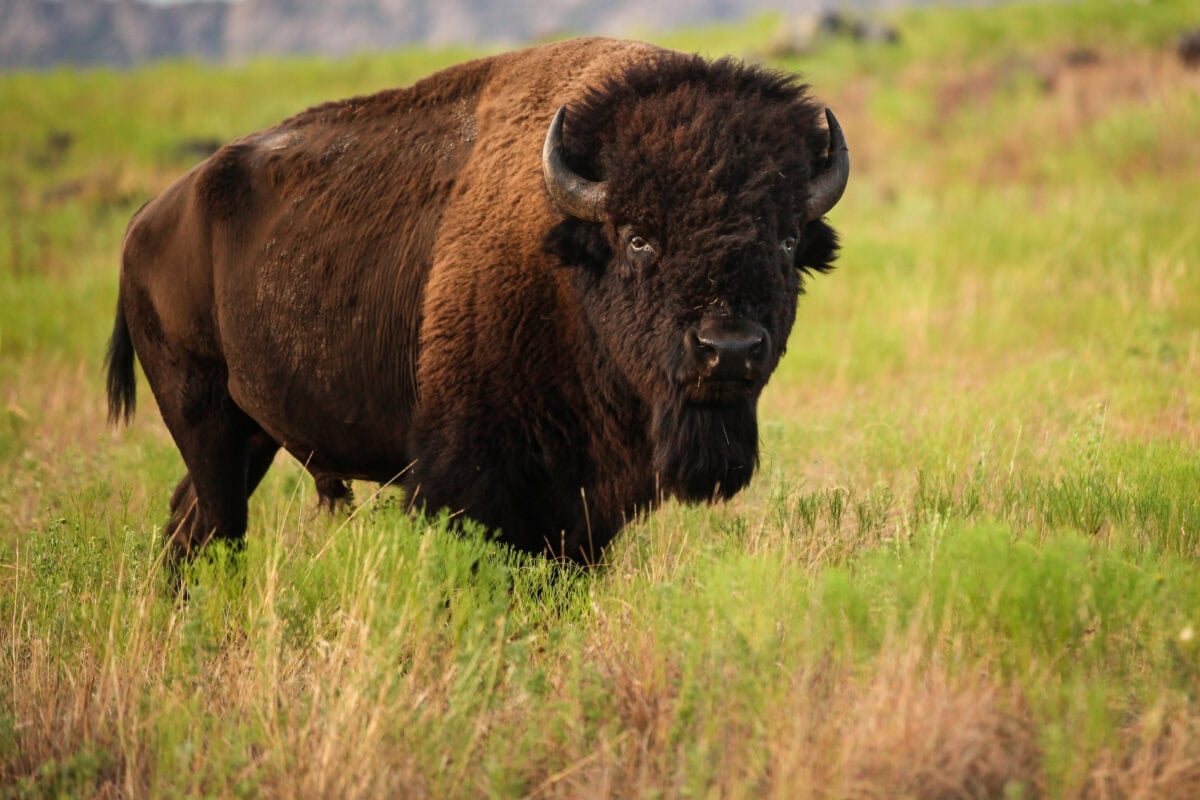Yellowstone National Park, sprawling across nearly 3,500 square miles of wilderness, is a veritable treasure trove of diverse ecosystems and breathtaking wildlife. Celebrated as the first national park in the world, it offers visitors a unique opportunity to encounter a stunning array of animals in their natural habitats. From majestic predators to delicate bird species, this vibrant landscape supports a rich tapestry of life. Join us as we embark on an exploration of the top 10 animals that call Yellowstone home, revealing the wondrous and dynamic world of its wildlife.
10. The Mighty Bison

The American bison, often referred to as the buffalo, is an iconic symbol of the grandeur of Yellowstone. Weighing up to 2,000 pounds, these formidable creatures are the largest land mammals in North America. They can be seen roaming the park’s grasslands and valleys, grazing peacefully. Bison play a pivotal role in maintaining the ecological balance of the park by shaping vegetation patterns and providing habitats for other species. Visitors can often witness their impressive migrations and seasonal behaviors.
9. Wolves The Apex Predators

Reintroduced into the park in 1995, gray wolves have become a celebrated success story in Yellowstone’s conservation efforts. These intelligent pack hunters have had profound impacts on the park’s ecosystem, helping to control populations of prey animals like elk, which in turn has allowed vegetation to recover. Observing them in their natural habitat offers a glimpse into the complex social structures and hunting strategies of these remarkable predators.
8. Grizzly Bears The Park’s Giants

Yellowstone’s grizzly bears are among the most exciting animals to observe. With some males weighing over 700 pounds, these omnivorous giants are awe-inspiring yet command respect. As opportunistic feeders, they forage for roots, and berries, and occasionally hunt elk or scavenge carrion. Springtime sightings are common as they emerge from hibernation, while autumn offers views of bears feasting in preparation for winter.
7. Pronghorn The Speedsters

Pronghorns are often mistaken for antelope due to their swift speed and graceful build. They are uniquely adapted for life on the open plains and grasslands of Yellowstone, capable of reaching speeds up to 60 miles per hour. This agility is a defense mechanism against predators, allowing pronghorns to evade threats with sheer velocity. Their distinctive white rumps are an unmistakable feature for wildlife enthusiasts.
6. The Elusive Mountain Lion

Mountain lions, also known as cougars or pumas, are some of the most elusive animals in Yellowstone. Solitary and crepuscular, these predators are adept hunters, preying primarily on mule deer and elk. Sightings are rare due to their secretive nature and nocturnal habits. However, their presence is vital to the ecosystem as it regulates prey populations and maintains the park’s biodiversity.
5. Bald Eagles Symbols of Freedom

The majestic bald eagle, a national symbol of the United States, can be widely observed throughout Yellowstone. These imposing birds of prey build large nests in tall trees near water bodies, from which they watch over their territories. They feed primarily on fish, but their opportunistic nature means they occasionally hunt small mammals or scavenge carrion. Spotting a bald eagle in flight is an unforgettable experience for park visitors.
4. Playful River Otters

River otters bring a sense of joy and playfulness to the waters of Yellowstone. These social and intelligent animals are often seen sliding down riverbanks or frolicking in the water. Otters are adept swimmers, using their sensitive whiskers to locate fish and other aquatic prey. They thrive in clean, healthy waterways, making their presence a positive indicator of the park’s environmental health.
3. Majestic Elk

Elk are among the largest mammals in Yellowstone and are frequently encountered by visitors. Known for their impressive antlers, which can span up to four feet across, elk are particularly noticeable during the fall rutting season when bulls engage in loud bugling calls and fierce battles for dominance. Their grazing patterns play a crucial role in controlling vegetation and providing food sources for other species.
2. Coyotes The Adaptable Hunters

Coyotes, although smaller than wolves, are incredibly resourceful and adaptable. These clever canids thrive in Yellowstone, hunting rodents, small mammals, and even insect species. Known for their distinctive nighttime howls, coyotes are integral to the park’s ecosystems, maintaining populations of small prey animals and scavenging opportunities that benefit other wildlife.
1. Trumpeter Swans Grace on Water

Trumpeter swans are among the largest and most elegant waterfowl in the park. Renowned for their pristine white plumage and deep, resonant calls, they often inhabit tranquil lakes and slow-moving rivers. Yellowstone provides vital nesting sites and breeding habitats for these swans, whose population recovery has been a conservation triumph. Observers delight in their graceful movements and serene beauty.
Conservation Efforts and Ecosystem Dynamics

Yellowstone’s rich biodiversity is supported by ongoing conservation efforts aimed at protecting the delicate balance of its ecosystems. Strategies such as habitat restoration, wildfire management, and regulating human activities help preserve the park’s natural wonders. As visitors marvel at the diversity of species within the park, these initiatives ensure that future generations can continue to appreciate and learn from Yellowstone’s wildlife.
Conclusion

Yellowstone National Park is a sanctuary for wildlife enthusiasts and nature lovers alike. The diverse array of animals that thrive in its expansive landscapes is a testament to the park’s ecological importance and the success of its conservation efforts. From the iconic bison to the stealthy mountain lion, exploring Yellowstone’s wildlife is an unforgettable journey into the heart of nature’s astonishing hierarchy and beauty. Through continued preservation and respect for these creatures and their habitats, Yellowstone will remain a vibrant haven for wildlife and a source of inspiration for all who visit.
- 15 Animals Smarter Than You Think - August 15, 2025
- 14 Most Misunderstood Pets You Should not Overlook - August 15, 2025
- 14 Birds of Prey That Rule the Skies - August 15, 2025

